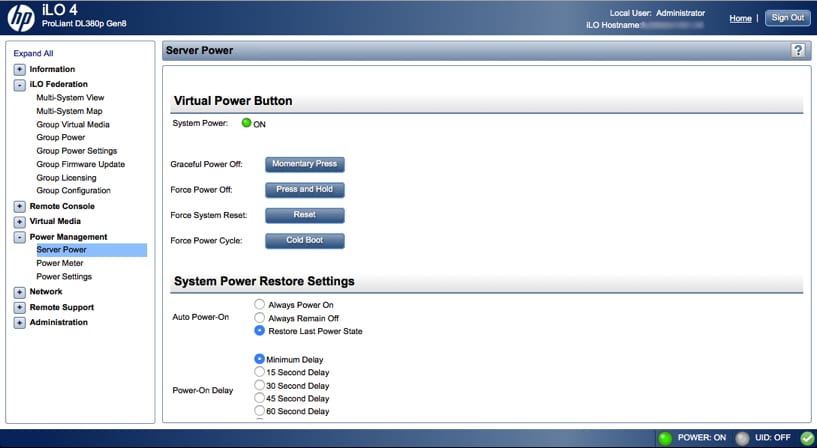


#Hp ilo 4 boot from virtual media iso#
I'm booting right from the installer ISO named My demonstration video below shows me kicking off an actual VMware ESXi 6.5 hypervisor install.You should read the IPMI 3.46 release notes before upgrading.Java is the second biggest security vulnerability that requires constant patching, after Adobe’s Flash plugin. Java for sysadmin has been plagued by security vulnerabilities.This method only uses a network share that you mount your ISO or bootable ISO files from, meaning you no longer need Java installed for iKVM's ability to boot from ISOs!.Meanwhile, Supermicro's IPMI web interface has a Virtual Media, CD-ROM Image mounting ability that lets you get around this limitation.While the iKVM/HTML5 in IPMI 3.46 doesn't currently have any ISO mount ability, future upgrades to iKVM/HTML5 might add native point-and-click ISO mounting capabilities.In the short video below, you'll learn the following: Given HTML5 is Supermicro's stated direction going forward, one can only hope more of those little bugs get squashed with future IPMI releases, especially for this beloved, home lab friendly Xeon D / Broadwell-DE, with some models featuring a 7 year Product Life SoC design. Recently, the new and slightly buggy browser-only remote control UI finally frees you from the need for Java as well. If you're used to licensing fees for remote console capabilities for enterprise server vendors like IBM, HP, Dell, and Lenovo, a nice perk with Supermicro is that their flavor out-of-band IPMI-based remote control is free.

This includes all Xeon D systems that Supermicro makes, which are now at 3.46. You will need to have a Supermicro system / X10SDV motherboard that is capable of running IPMI 3.3.x, or later. Image URL-The URL that points to the connected scripted media.This is one of those simple tips that I think Supermicro SuperServer owners will really appreciate. Scripted media is displayed when scripted media is connected. Image Inserted-The Virtual Media type that is connected. When scripted Virtual Media is connected, the following details are listed in the Virtual Floppy/Virtual Folder Status section and Virtual CD/DVD-ROM Status section: Optional: To boot to the connected image now, click Server Reset to initiate a server reset. If this check box is not selected, the image will remain connected until it is manually ejected, and the server will boot to it on all subsequent server resets, if the system boot options are configured accordingly.

The image will be ejected automatically on the second server reboot so that the server does not boot to this image twice. Select the Boot on Next Reset check box if the server should boot to this image only on the next server reboot. The image must be located on a web server on the same network as iLO.Įnter the URL for the scripted media in the Scripted Media URL box in the Connect Virtual Floppy section (.img files) or the Connect CD/DVD-ROM section (.iso files). Scripted media supports only 1.44 MB floppy images (.img) and CD/DVD-ROM images (.iso). NET IRC or Java IRC, RIBCL/XML, or the iLO CLI to connect other types of Virtual Media. You can connect scripted media from the Virtual Media page. An iLO reset will also close the connection. This connection must be disconnected through the Onboard Administrator. In this case, the connection is most likely the HP BladeSystem Onboard Administrator DVD Drive.
#Hp ilo 4 boot from virtual media full#
To eject local Virtual Media devices, click the Force Eject Media button in the Virtual Floppy/USB Key/Virtual Folder Status section or Virtual CD/DVD-ROM Status section.įor blade servers without an iLO license that grants full Virtual Media privileges, youĬannot use the Force Eject Media option with a virtual media image that was mounted via URL. Local media is displayed when local media is connected.Ĭonnected-Indicates whether a Virtual Media device is connected. Virtual Floppy/USB Key/Virtual Folder Status When local Virtual Media is connected, the details are listed in the following sections:


 0 kommentar(er)
0 kommentar(er)
